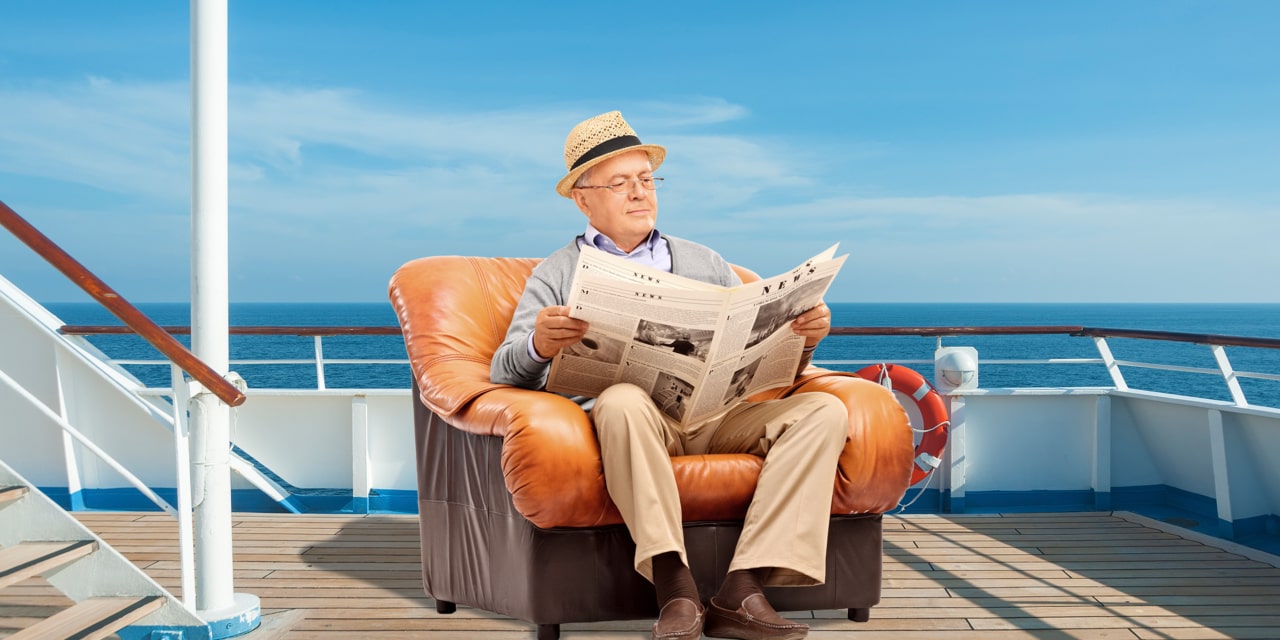Exploring the Possibility of a Cruise-Based Retirement
In recent years, I’ve discovered the joys of traveling on cruise ships, which offer a wide range of experiences. From walking on the sands of a private island in the Bahamas to standing atop a glacier in Alaska and enjoying freshly caught seafood in Bermuda, each trip has been memorable. The days and nights spent aboard the ships themselves have also provided a sense of peace and relaxation, often with a cold drink in hand.
This got me thinking: Could I make this a full-time lifestyle in retirement? At first, it seemed hard to imagine, as cruising typically involves short trips ranging from three to nine days. Even longer journeys like transatlantic sailings rarely last more than two or three weeks. However, there are individuals who live aboard cruise ships, and some retirees have even made this their way of life. This has led to the emergence of a niche industry catering to those seeking a ship-based retirement.
For many, the idea of retiring on a cruise ship is appealing, especially considering the rising costs of healthcare and concerns about the future of Social Security. With only 2.5% of Americans having $1 million or more in their savings, many may find it challenging to retire without worry. This makes finding affordable alternatives essential for those looking to maintain a comfortable lifestyle in their later years.
I learned about this concept through Sharon Lane, a 77-year-old woman from California who chose to retire aboard the Villa Vie Odyssey, a ship designed for full-time cruise living. She found that a life at sea could be more cost-effective than a traditional land-based retirement. I spoke with her over Zoom while her ship was sailing along the Alaskan coastline, and I also consulted with cruise and financial experts to understand the feasibility of this lifestyle.
The Options and Costs
A land-based retirement can vary significantly in cost depending on where you live. For example, a comfortable retirement in Hawaii could cost up to $232,837 a year, while in West Virginia, it might be as low as $65,674. In New York, my wife and I estimate our annual expenses would be around $128,005.
When it comes to a cruise-based alternative, the costs are more complex. Traditional cruise ships require back-to-back sailings, which can quickly add up. A month-long stay on a balcony cabin on the Norwegian Joy, for instance, could cost around $18,000, totaling $216,000 for a year. Additional expenses such as gratuities, internet, and casino visits can further increase the total. Plus, the logistics of starting anew with each sailing can be challenging.
Another option is the World, a luxury ship offering “residences” for those seeking to sail the world year-round. These residences start at $2.5 million and come with an annual fee of at least $200,000, making them far pricier than other options.
Villa Vie offers a more accessible alternative, targeting middle-class retirees. A fully furnished balcony cabin on the Odyssey costs $340,000 for a guaranteed 15 years of use, with an annual fee of $96,000 for a couple. While this may be cheaper than a land-based retirement, it still requires a significant upfront investment.
Financial Considerations
There are several financial factors to consider when planning a cruise-based retirement. Health insurance is one of the most critical. Medicare has limited coverage for international travel, so a global health policy may be necessary. A decent plan could cost around $30,000 annually.
Maintaining a land-based home is another consideration. Some retirees choose to keep a property for occasional stays, while others rely on hotels or short-term rentals. Richard and Angelyn Burk, for example, spend about 180 days a year on cruises and use hotels for the rest of the time.
The cost of excursions and adventures in port should also be factored in. While some activities can be expensive, there are ways to save by opting for free or low-cost options.
Pros and Cons of a Cruise-Based Lifestyle
One of the main advantages of a cruise-based retirement is the opportunity to see the world. It offers a unique way to experience different cultures and places without the hassle of daily chores like cooking. For many, this is a dream come true.
However, there are potential downsides. Living on a cruise ship means being part of a close-knit community, which can lead to both strong friendships and potential conflicts. Additionally, as retirees age, mobility and health issues may make cruise living less feasible. There is no built-in care model, making it unsuitable for long-term aging in place.
Cruise cabins can also be small, but many residents find creative ways to make the space work. Sharon Lane, for instance, considers her 130-square-foot cabin as her bedroom, with the rest of the ship serving as her living room, dining area, and fitness center.
Final Thoughts
While the idea of a cruise-based retirement is appealing, it’s not for everyone. The financial commitment, logistical challenges, and personal preferences all play a role in the decision. I’m still weighing the options, but I’m also aware of my own limitations, such as a tendency toward seasickness. However, with solutions like Dramamine, it’s possible to manage.
Ultimately, the choice depends on individual circumstances and priorities. For some, the adventure of a lifetime on the open sea may be worth the trade-offs.







